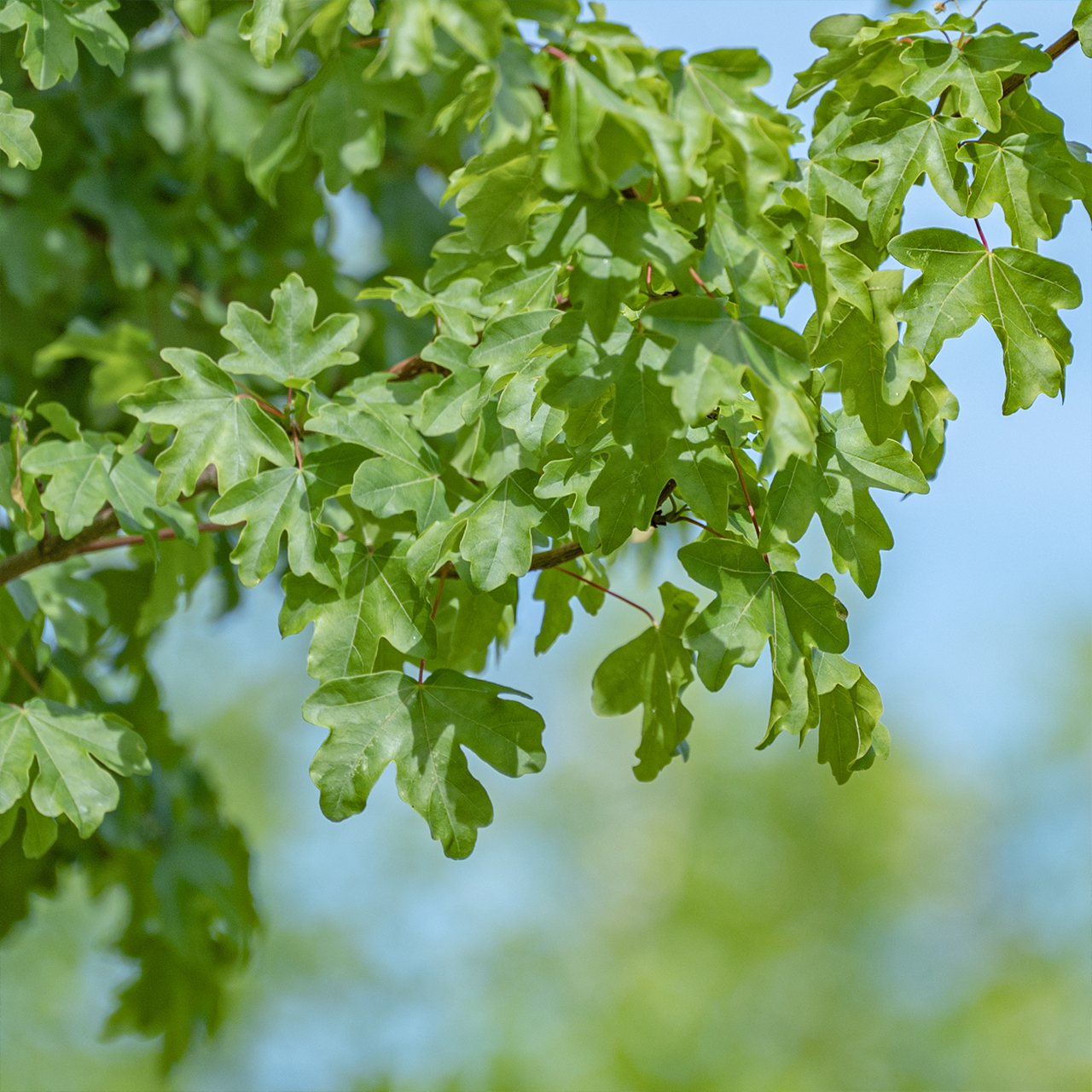Field maple
The field maple has been used as an ornamental and timber tree for centuries. The variety ‘Elsrijk’ comes from the Netherlands and was bred for its excellent traits. Once it has reached maturity, the field maple – unlike other maple species – is very robust and requires little tending. One special feature is its seeds. As soon as they are ripe, they whirl to the ground like the rotor blades of a helicopter thanks to their little wings. Later, they split into two fruit halves, which children like to wear as “noses.”
Field maple (Acer campestre ‘Elsrijk’)
| Family: | Soapberry, Sapindaceae |
| Distribution: | Cultivar, Europe to Asia Minor |
| Size: | 10–12 metres in height and 4–6 metres in breadth |
| Life: | Up to 200 years |
| Requirements: | Sun to light shade; it is very frost hardy and tolerates heat, wind and shade |
| Soil: | Dry to fresh soils; loves calcareous soils, avoids waterlogging |
| Benefits: | The ‘Elsrijk’ cultivar is more compact and leaner than the wild form and is therefore better suited as an urban and street tree. |
Knowledge transfer meets research institution
By supporting science, the RAG-Stiftung contributes to research into the achievements of the former mining regions, enabling the findings to be used for posterity. One prominent example is the German Mining Museum in Bochum (DBM). Its concept is unique: The DBM, which is also a Leibniz Research Museum, combines a powerful research institute and a lively exhibition under one roof. The museum was completely converted and the permanent exhibition redesigned just a few years ago. The RAG-Stiftung initiated and funded the structural renovations and new museum concepts for the permanent exhibitions on the topics of “Hard Coal and People” and “Mining” in order to vividly convey the history of mining to future generations. As part of that, modern formats such as interactive games, hands-on exhibits and a “children’s trail” were developed to present exhibits to our youngest guests in an age-appropriate manner.
Occasion for planting
In December 2024, the pithead frame above the DBM was “unveiled.” The popular landmark is once again fully visible after almost a year of extensive renovation work. It took four months to enclose the double trestle headframe, which was covered with a dust-proof tarpaulin. The restoration was then carried out in several phases – from steel work to repainting in the familiar “Germania green” colour. The field maple hornbeam commemorates this special day, which was fittingly celebrated in February 2025 with a museum festival and the opening of a special exhibition on the double trestle headframe.

